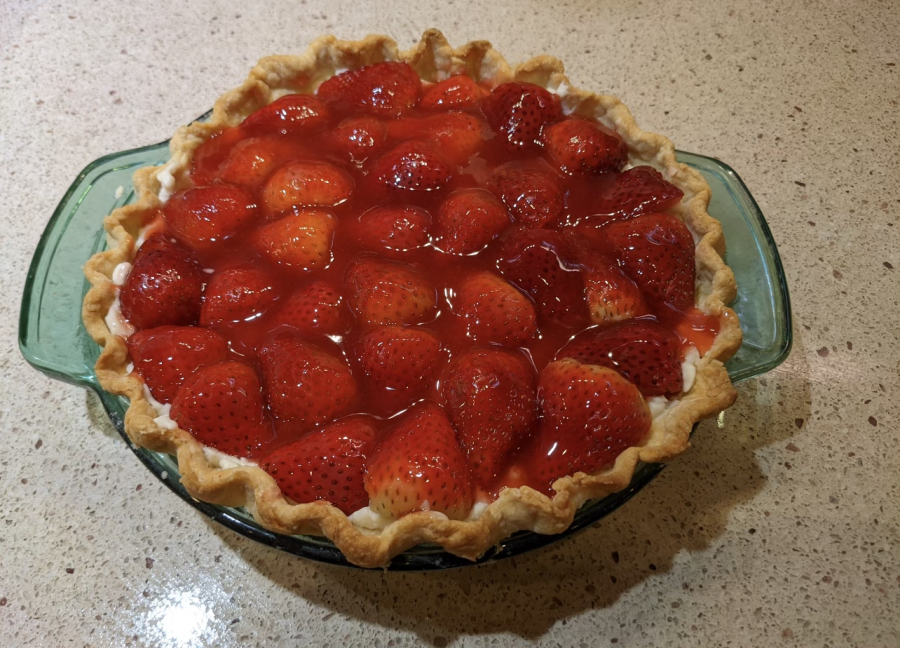Pie vs. Cake: The Great Debate Analytically Settled
Strawberry rhubarb pie
Throughout humanity’s multi-millenia history of war and strife, there is one conflict that stands above the rest. From the multinational conflict of the first World War to the Hundred Years War of the Middle Ages, to the 1,500-year-old debate between Sunni and Shia Muslims over the Prophet Muhammad’s legacy, still nothing compares to the eternal question: pie or cake? Today, I settle the debate once and for all.
The warring desserts will be graded on three criteria: content versatility, structural versatility, and a cost-benefit analysis.
Content versatility describes the range of flavors and textures that can be featured. There can be great versatility in cakes, from tall, light and dry angel food cakes to dense and moist pound cakes, but cake is still just cake. Meanwhile, pie has seemingly limitless versatility in its contents. From fruit pies to custards to nut pies to quiches, from hot water crusts to flaky pastry to graham cracker crust, pie wins this category easily.
Structural versatility describes how the dessert can be formed into different shapes and designs for different occasions. Pie is severely lacking in the category. Despite the high variance of contents, pie is still confined to a pie pan, limiting its structural possibilities. Meanwhile, the spectrum of cakes ranges from bite sized cupcakes to towering, multi-level wedding cakes. Cake can be made to look like anything. Seriously, there’s a reality game show on Netflix called “Is It Cake?” where contestants have to guess whether everyday objects are real or highly detailed replicas made out of cake. Don’t watch it, it’s a terrible show (I got through half an episode), but it certainly showcases the upper bounds of cake’s possibilities.
Taking one category each, the debate will come down to the last category: the cost-benefit analysis. This is where it begins to get more complicated. You see, comparing the best pie and the best cake will do us no good. Frankly, I want to eat them both, and don’t really care which is better. So for the purposes of this comparison, we will be examining the low end of both categories — the type you can get for cheap at the supermarket bakery. This is where a rift begins to reveal itself.
What makes for a bad cake? It can be too dry, or it can be too bland. The frosting can be too plentiful, or not enough, or it can be too sweet. I find all of these to be common occurrences among the low end of cakes. None of these problems necessarily resulted from a baking mistake, yet the cake still just wasn’t that good.
What makes for a bad pie? Well, I suppose it could be underdone with a soggy crust, or it could be overdone and be burnt. Maybe someone measured the ingredients wrong and ended up with a disaster. All of these scenarios involve baking mistakes — “bad pie” just isn’t a thing, assuming you follow a recipe correctly.
Time is money as well, however, so in order to complete the cost benefit analysis, we must also examine the possibilities for homemade desserts. Most pies, outside of custards, can be made to completion in less than 90 minutes, assuming 15 minutes each to make pastry and filling, and 60 minutes or less to bake. Meanwhile, a relatively bare-bones cake will take the same amount of time to mix, bake, and lightly frost. Any additional layers or fancy frosting will only continue to add to the cake’s time commitment.
With this, pie pulls ahead, taking two of three categories from cake. You can argue all you want, but the proof is in the pudding. Or, in this case, the pie.
Your donation will support the student journalists of Chamblee High School Blue & Gold. Your contribution will allow us to print editions of our work and cover our annual website hosting costs. Currently, we are working to fund a Halloween satire edition.

Adam Pohl is a senior and this is his second year on the staff. One movie that describes his life is "I Am Legend." In five years, he sees himself graduating college and entering the workforce as one insignificant cog in the unrelenting machine of capitalism.





Karthikeya Vishwanatham • Jul 28, 2022 at 2:45 pm
HAH. Pie strikes again.